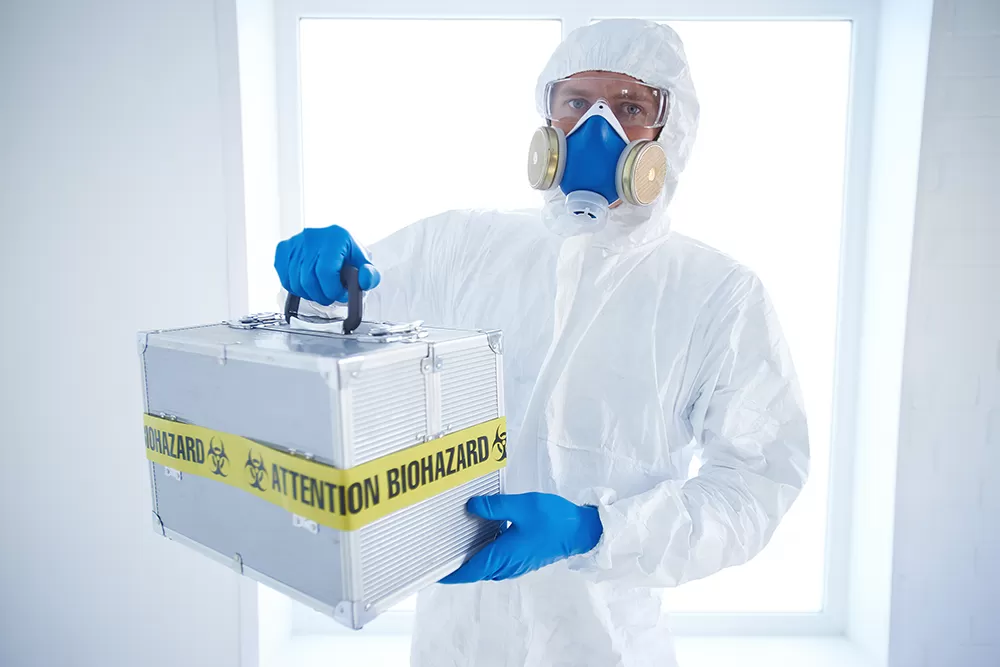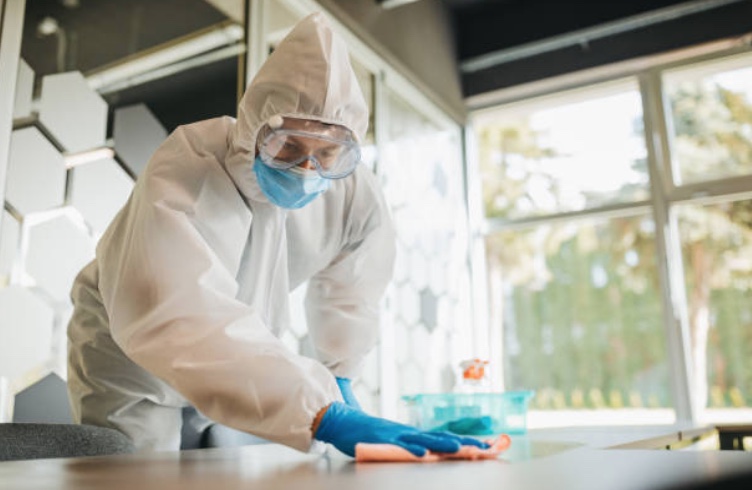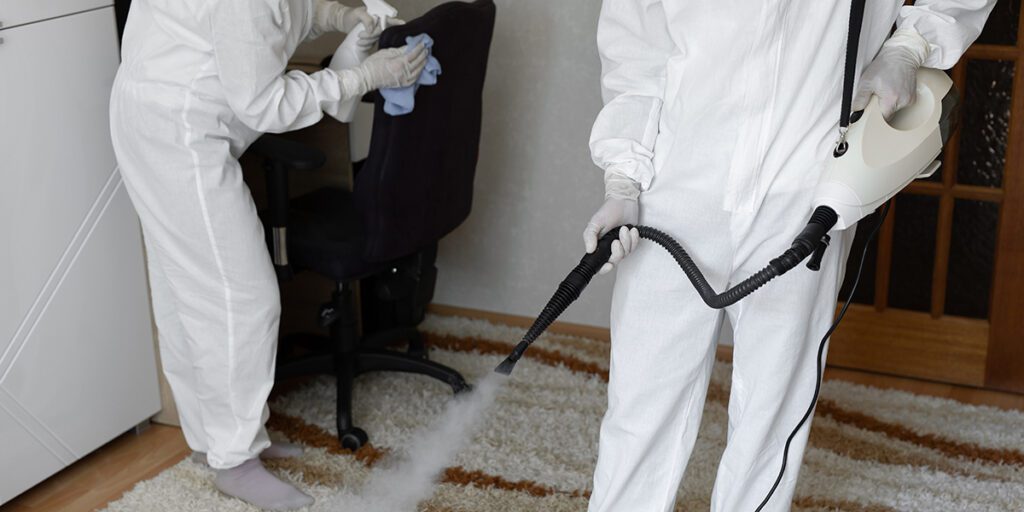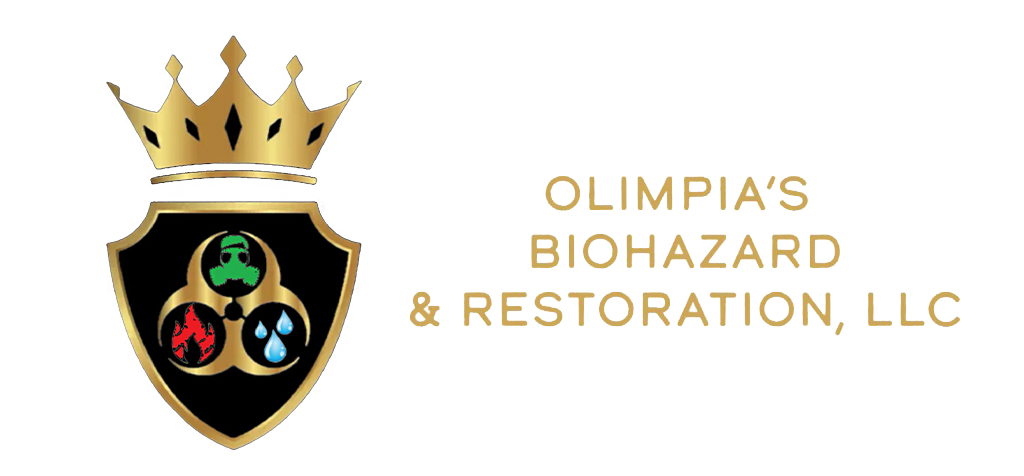Biohazard cleanup plays a crucial role in the process of meth lab cleanup, addressing the hazardous aftermath of illegal drug production. Methamphetamine production involves toxic chemicals and volatile substances, leaving behind a hazardous environment. Biohazard cleanup teams specialize in safely and effectively remediating these contaminated spaces. Their expertise includes the removal and disposal of chemical residues, contaminated materials, and the decontamination of surfaces to ensure a safe living or working environment. This critical service not only protects the health of individuals but also helps communities reclaim spaces once tainted by the harmful effects of meth production. In this discussion,Olimpia’s Biohazard and Restoration will delve deeper into the vital role that biohazard cleanup plays in mitigating the dangers of meth labs.
Safety First:
When it comes to meth lab cleanup services and cleaning up hazardous environments like meth labs, one thing always takes the top spot: safety. It’s not just a priority; it’s the foundation upon which everything else is built. Biohazard cleanup teams understand that they’re dealing with some seriously dangerous stuff. They suit up in hazmat gear that looks like it’s straight out of a sci-fi movie – complete with gloves, respirators, and full-body suits. Why? Because they’re dealing with toxic chemicals and contaminants that could seriously harm them if they’re not protected. So, when they walk into that meth lab, they’re like modern-day knights, armored up to ensure they can do their job without risking their own health. And when it comes to safety, there’s no compromise. It’s non-negotiable, and that’s why it always comes first.
Chemical Removal:
The nitty-gritty of meth lab cleanup – chemical removal. It’s a bit like being a detective and a chemist rolled into one. These cleanup teams are pros at identifying and safely getting rid of the toxic chemicals that were used in making meth. Think about it: meth production involves some seriously hazardous stuff like ammonia, iodine, and phosphine gas. These chemicals can linger in the lab long after the cooking is done, posing a real danger. So, the cleanup crews carefully locate and dispose of these substances to prevent any further harm. It’s not just about cleaning up a mess; it’s about making sure no traces of these harmful ingredients are left behind, which is absolutely crucial for safety. These folks are basically the cleanup superheroes dealing with some seriously dangerous villains!
Contaminated Material Removal:
The crucial task of contaminated material removal in meth lab cleanup – it’s like the ultimate spring cleaning, but with a twist. Biohazard cleanup teams have a meticulous job on their hands. They need to clear out everything that’s been tainted by the meth-making process, as is done in the process of restoring property After a Biohazard incident. We’re talking about glassware, equipment, furniture, even personal items that could carry those toxic residues. It’s not just about tossing things out; it’s about making sure that anything and everything that might have come into contact with those harmful chemicals gets removed safely. This step is all about leaving no stone unturned, ensuring that the lab is entirely rid of anything that could pose a risk to people’s health. It’s like a thorough housecleaning on steroids, but with safety as the top priority. These cleanup teams are like the maestros of the ultimate cleanup symphony.


Decontamination:
- Clean Sweep: Decontamination is like giving the meth lab a clean slate. Cleanup crews use specialized cleaning agents and techniques to ensure that every surface, from walls to floors, is free from toxic residue.
- Chemical Neutralization: They use methods to neutralize any remaining chemical residues. It’s a bit like a science experiment – they need to make sure those dangerous substances are completely rendered harmless.
- Thorough Scrubbing: The teams meticulously scrub and sanitize every inch of the lab. No nook or cranny is left unattended. It’s all about leaving no space for potential harm.
- Specialized Equipment: Decontamination often involves high-powered equipment like pressure washers or chemical sprayers. These tools help ensure that even the most stubborn traces are removed.
- Repetition Matters: Sometimes, decontamination isn’t a one-and-done deal. Crews may need to repeat the process multiple times to make absolutely certain that the lab is safe.
- Air Quality: They also pay close attention to air quality. Special air filtration systems may be used to remove any lingering contaminants in the indoor environment.
- Testing: Before declaring a lab clean, they conduct tests to verify that it meets safety standards. These tests can include swabbing surfaces and analyzing air samples.
- Certification: Once the lab is truly decontaminated, it gets a certification stamp. This is the green light that says, “Safe for use.”
Waste Disposal:
Waste disposal – a critical part of the meth lab cleanup process that often goes unnoticed. When biohazard cleanup teams are finished with their superhero-like cleaning duties, they’re left with a pile of hazardous waste, and that stuff can’t just go in the regular trash bin. Instead, they’ve got to handle it with precision and care, following all the local, state, and federal regulations for hazardous waste disposal. This means packing up all those chemicals, contaminated materials, and residues in a way that won’t harm the environment or people. It’s like the final act of a magic trick, making all the hazardous stuff disappear while ensuring it’s safely contained and disposed of in a way that won’t cause harm to anyone down the line. These cleanup crews are not just cleaners; they’re also eco-friendly wizards.
Structural Evaluation:
Take a closer look at the importance of structural evaluation in meth lab cleanup, just as you would when spotting signs of a former meth lab. It’s not just about cleaning up chemicals and contaminants; it’s about making sure the place is physically safe too. Meth production can sometimes cause damage to the building itself, which can be dangerous if left unchecked. Cleanup teams play the role of detective here, inspecting the structure for any signs of harm, like weakened floors or walls. If they find any issues, they’ll coordinate repairs to ensure the space is structurally sound. It’s like having a home inspector come in after a wild party to make sure the house is still in good shape. This step adds that extra layer of safety, making sure the place is safe to use once again after all the hazardous materials are gone. These cleanup crews are like the ultimate safety squad, leaving no stone unturned to protect people.


Air Quality Testing:
Air quality testing, a crucial step in the meth lab cleanup process. You see, even after all the chemicals and contaminated materials are gone, there can still be invisible dangers lingering in the air. That’s where the experts come in with their air quality testing equipment. They take samples from the indoor environment to check for any leftover toxins or residues. It’s a bit like a detective looking for hidden clues. This testing helps ensure that the air inside the lab is safe to breathe, and that’s a big deal because breathing in those leftover fumes can be seriously harmful. So, when the cleanup crew gives the green light on air quality, it means you can breathe easy, knowing the space is safe for occupancy. It’s all about that final stamp of approval, confirming that the area is truly clean and hazard-free. These experts are like the guardians of fresh, clean air.
Documentation:
- Record Keeping: Documentation begins with thorough record-keeping. Cleanup teams create detailed logs of their activities from start to finish, including what they find, what they remove, and what they clean.
- Chemical Inventory: They maintain a comprehensive inventory of all hazardous chemicals and materials removed from the lab. This inventory helps track what was present and what’s been safely disposed of.
- Cleaning Protocols: Teams document the specific cleaning protocols and techniques used during decontamination. This ensures transparency and accountability in the process.
- Safety Certifications: Certifications and safety compliance records are maintained to demonstrate that the cleanup has met all the necessary safety standards and regulations.
- Air Quality Reports: Records of air quality testing, including before and after results, are crucial for confirming that the indoor environment is safe to occupy.
- Photographic Evidence: Visual documentation in the form of photographs or videos can provide a clear before-and-after picture of the cleanup efforts, showing the transformation from a hazardous space to a safe one.
- Legal Compliance: Documentation serves a legal purpose, too. It can be vital in case of disputes or legal issues related to the cleanup process.
- Certification of Completion: Ultimately, all this documentation leads to a certification of completion. This official document confirms that the meth lab has been successfully cleaned, decontaminated, and is now safe for use.
Compassion and Discretion:
Compassion and discretion in the context of meth lab cleanup. It’s not just about chemicals and contaminants; it’s about the people involved too. Cleanup teams often find themselves in sensitive and sometimes even heartbreaking situations. They understand the emotional toll that meth production can have on individuals and communities. So, they approach their work with a big dose of compassion. They’re not just there to clean up; they’re there to help people move forward. And they do it discreetly, respecting the privacy and dignity of those affected. It’s like they’re the silent heroes in the background, making a difficult situation a little bit easier for everyone involved. Their job isn’t just about cleaning; it’s about making a positive impact in people’s lives during challenging times. These cleanup crews truly understand that sometimes, the most important thing they can clean up is the aftermath of a tough situation.


FAQ’s:
What do biohazard cleanup do?
Biohazard cleanup teams specialize in safely removing and decontaminating hazardous materials and substances, such as blood, chemicals, or infectious waste, to ensure the safety of people and the environment.
What do you need to clean up biohazard?
To clean up a biohazard, you typically need personal protective equipment (PPE), specialized cleaning agents, waste disposal containers, and proper training to ensure safe and effective decontamination.
How do you manage biohazardous waste?
Managing biohazardous waste involves careful containment, labeling, and proper disposal in accordance with local, state, and federal regulations to prevent harm to humans and the environment.
What is biohazard decontamination?
Biohazard decontamination is the process of cleaning and disinfecting an area or object to eliminate harmful biological agents or hazardous materials, ensuring it is safe for human contact or use.
What is the importance of biohazard?
The importance of biohazard management lies in safeguarding human health and the environment by preventing the spread of infectious diseases and reducing the risks associated with exposure to dangerous biological materials.
CONCLUSION:
In conclusion, biohazard cleanup is the unsung hero in the challenging and hazardous task of meth lab cleanup. These dedicated professionals play a multifaceted role in ensuring the safety of both individuals and the environment. From safely removing toxic chemicals to decontaminating spaces and managing hazardous waste, their expertise is paramount. Furthermore, their compassion and discretion provide support to those affected by the aftermath of meth production. Biohazard cleanup not only restores physical safety but also helps communities heal emotionally, making it an indispensable part of the process. Their commitment to meticulous, safe, and compassionate cleanup transforms once-dangerous spaces into places of security and hope.
